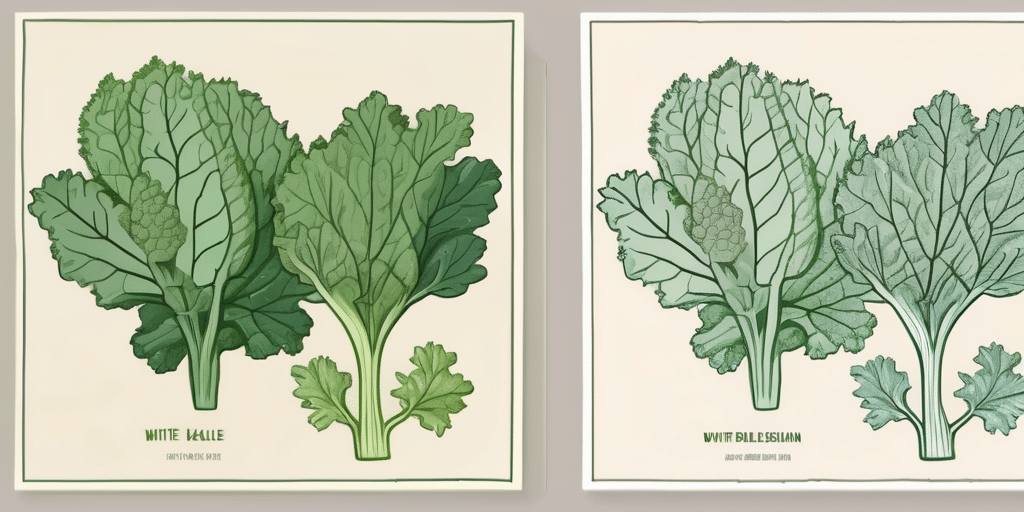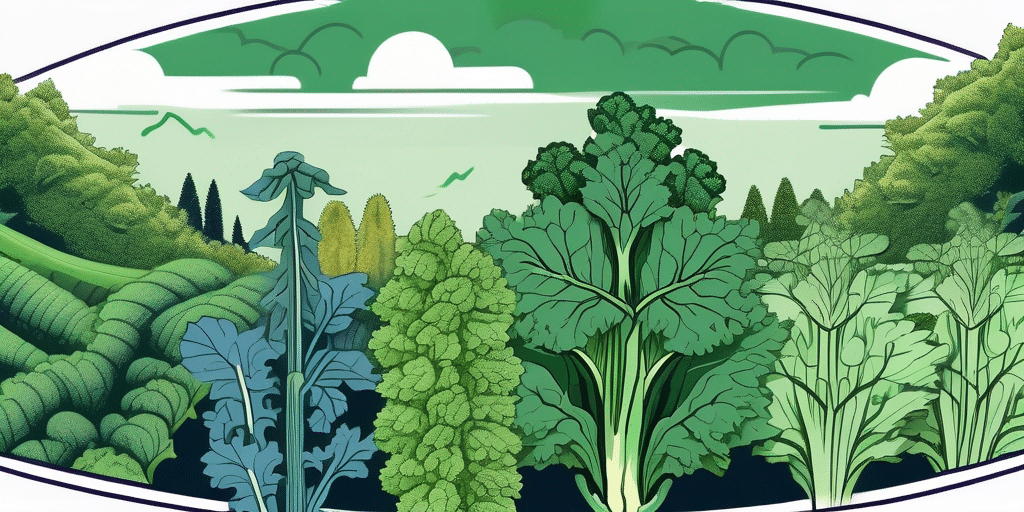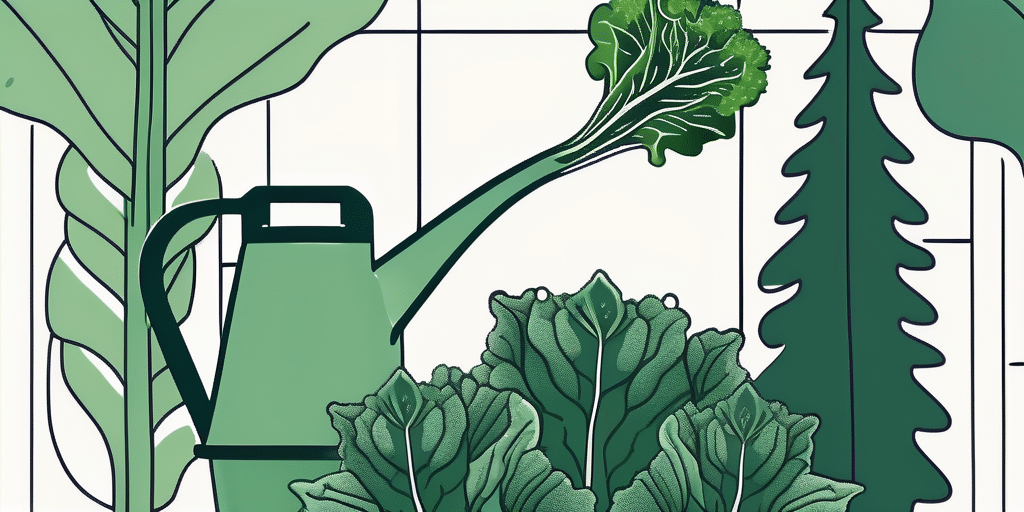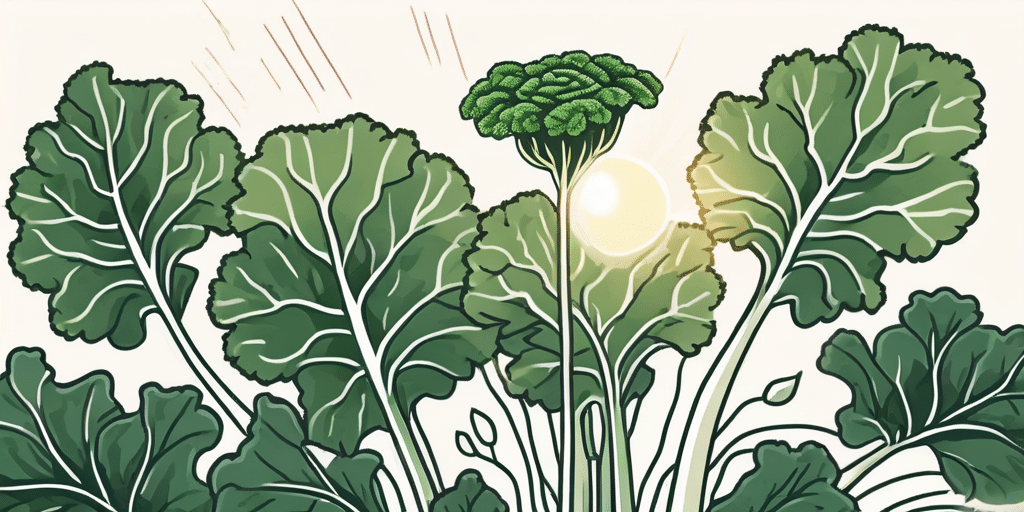Toscano kale, also known as dinosaur kale or Lacinato kale, is a popular variety of kale that thrives in USDA hardiness zones 7a and 7b. If you are living in these zones and want to grow this nutritious and delicious leafy green, then this article is for you. In this guide, we will cover everything you need to know about growing Toscano kale in zones 7a and 7b, from when to plant it to how to care for it.
Growing Toscano Kale in Zones 7a and 7b
Before we dive into the specifics of when to plant and how to grow Toscano kale, let’s talk about its climate and hardiness in zones 7a and 7b.
Climate & Hardiness in Zones 7a and 7b
Toscano kale is a cold-hardy vegetable that can withstand frost and even temperatures as low as 0°F (-18°C). It thrives in cool weather and is especially well-suited for fall and winter gardening in zones 7a and 7b.
In addition to its cold tolerance, Toscano kale is also known for its ability to withstand heat. This makes it a versatile choice for gardeners in zones 7a and 7b, where the temperature can fluctuate throughout the year. Whether it’s a chilly autumn day or a surprisingly warm winter afternoon, your Toscano kale plants will continue to thrive.
When growing Toscano kale in these zones, it’s important to keep in mind the average first and last frost dates. In zone 7a, the average first frost date is around October 15th, while the average last frost date is around April 15th. In zone 7b, the average first frost date is around November 15th, and the average last frost date is around March 15th.
With this information, you can plan your planting schedule accordingly. By understanding the frost dates, you can ensure that your Toscano kale plants have ample time to grow and mature before the arrival of frost.
Now that you know the climate conditions in zones 7a and 7b, let’s move on to when to plant Toscano kale.
When to Plant Toscano Kale in Zones 7a and 7b
The best time to plant Toscano kale in zones 7a and 7b is in late summer or early fall, around 6-8 weeks before the average first frost date. This timing allows the plants to establish themselves before the cold weather sets in.
However, if you missed the window for fall planting, don’t worry! Toscano kale can also be planted in early spring, as soon as the soil can be worked. Just make sure to provide the plants with some protection from late frosts, such as using row covers or cloches.
Here is a step-by-step guide on how to plant Toscano kale in zones 7a and 7b:
- Prepare the soil by removing any weeds and adding organic matter, such as compost or well-rotted manure.
- Sow the seeds directly into the garden bed, spacing them about 12-18 inches apart.
- Plant the seeds at a depth of ¼ to ½ inch, and cover them lightly with soil.
- Water the seeds gently but thoroughly, ensuring that the soil is evenly moist.
- Keep the soil consistently moist until the seeds germinate, which usually takes around 7-14 days.
Once your Toscano kale plants have germinated, it’s time to care for them and ensure a successful harvest.
When to Harvest or Pick Toscano Kale in Zones 7a and 7b
Toscano kale is a fast-growing vegetable that can be harvested within 55-65 days after planting. The leaves become sweeter and more flavorful after a light frost, making fall and early winter the ideal time to harvest.
However, don’t limit yourself to just one harvest! Toscano kale is a cut-and-come-again crop, meaning you can continuously harvest the outer leaves while allowing the inner leaves to continue growing. This way, you can enjoy fresh, nutrient-rich kale throughout the season.
To harvest Toscano kale in zones 7a and 7b, follow these steps:
- Select mature leaves that are at least 8-10 inches long.
- Hold the base of the leaf with one hand and use the other hand to pull the leaf away from the stem.
- Alternatively, you can use a sharp pair of scissors or garden shears to snip the leaves off the stem.
- Harvest the outer leaves first, allowing the inner leaves to continue growing.
Remember to wash your harvested Toscano kale leaves thoroughly before consuming or storing them. Freshly harvested Toscano kale can be stored in the refrigerator for up to a week.
Frequently Asked Questions
Now that you know how to grow Toscano kale in zones 7a and 7b, let’s address some frequently asked questions about this leafy green:
- Q: Can I grow Toscano kale from seedlings instead of seeds?
- Q: How often should I water Toscano kale?
- Q: Are there any pests or diseases that affect Toscano kale?
A: Yes, you can plant Toscano kale seedlings instead of starting from seeds. Just make sure to choose healthy seedlings from a reputable nursery or start your own indoors around 4-6 weeks before the desired planting date.
A: Toscano kale requires consistently moist soil. Water deeply whenever the top inch of soil feels dry to the touch. Avoid overwatering, as it can lead to root rot.
A: Toscano kale is relatively resistant to pests and diseases. However, keep an eye out for common kale pests such as aphids, cabbage worms, and flea beetles. If you notice any signs of infestation, treat the plants with organic pest control methods or consult with your local agricultural extension office for specific recommendations.
By following these guidelines and taking care of your Toscano kale plants, you can enjoy a bountiful harvest of this nutritious and versatile leafy green in zones 7a and 7b. So go ahead, sow some seeds, and get ready to reap the benefits of growing your own Toscano kale!
One additional tip for growing Toscano kale is to regularly fertilize your plants to ensure they receive the necessary nutrients for healthy growth. You can use a balanced fertilizer or opt for organic options like compost or manure. Apply the fertilizer according to the package instructions, usually every 4-6 weeks during the growing season, to promote strong, vibrant kale leaves.
Another important aspect to consider when cultivating Toscano kale is proper spacing between plants. Adequate spacing allows for good air circulation, which can help prevent common fungal diseases such as powdery mildew. When planting your kale seedlings or transplants, space them about 12-18 inches apart in rows that are 18-24 inches apart. This spacing not only aids in disease prevention but also ensures that each plant has ample room to develop a robust root system and access to sunlight for photosynthesis.
Join Our Gardening Community
Ready to take your Toscano kale and other garden ventures to the next level? Subscribe for free to How to Grow Everything and learn how to build the garden of your dreams! Receive personalized gardening advice tailored to your specific location, grow zone, and experience level. Enjoy the best gardening tips, special offers, and deals delivered directly to your inbox – all 100% free, from our family to yours. With thousands of free growing and gardening articles at your fingertips, you’ll have everything you need to grow a bountiful, beautiful garden. No spam, no tricks, just valuable insights to help your garden thrive. Subscribe now and join our community of passionate gardeners!






